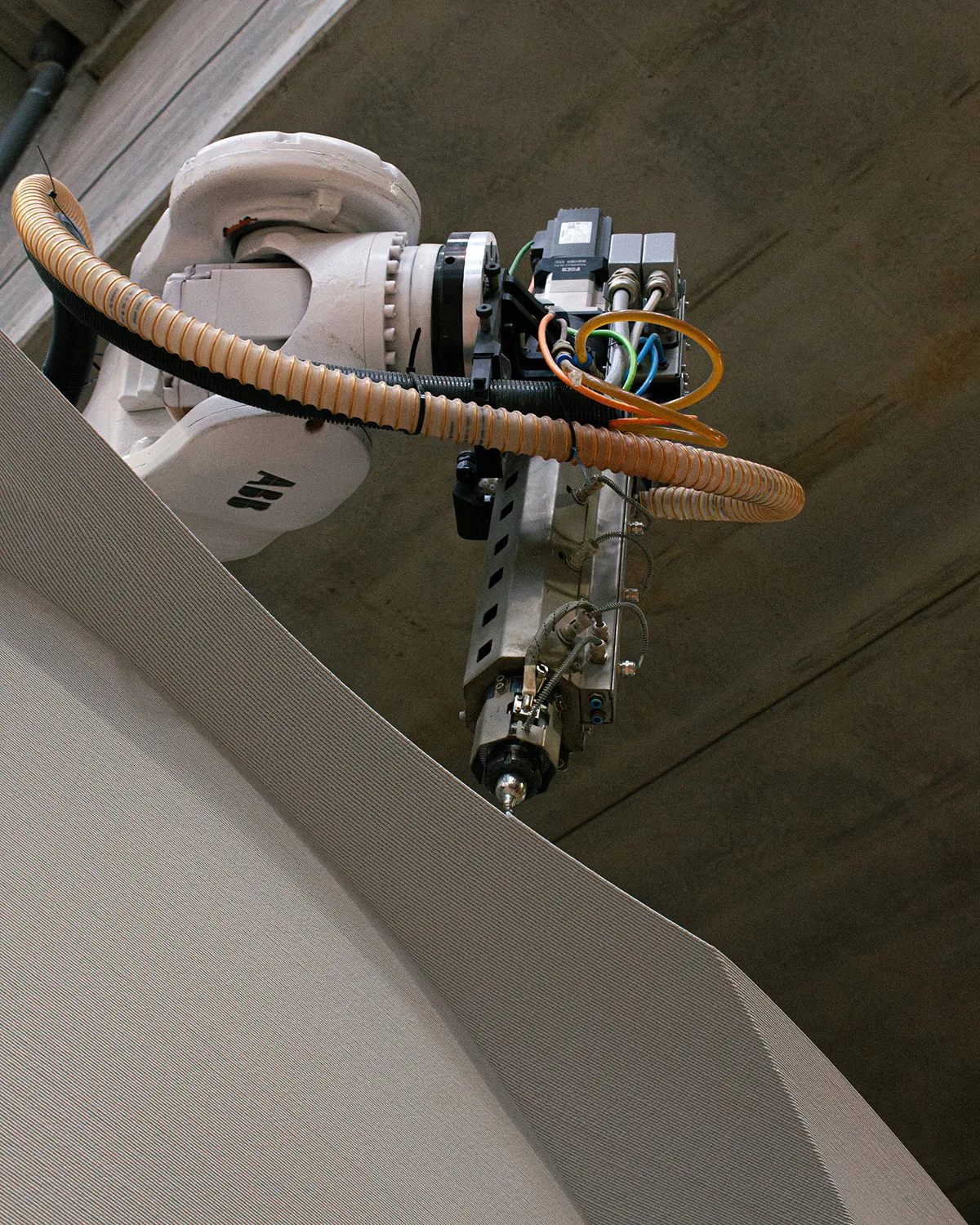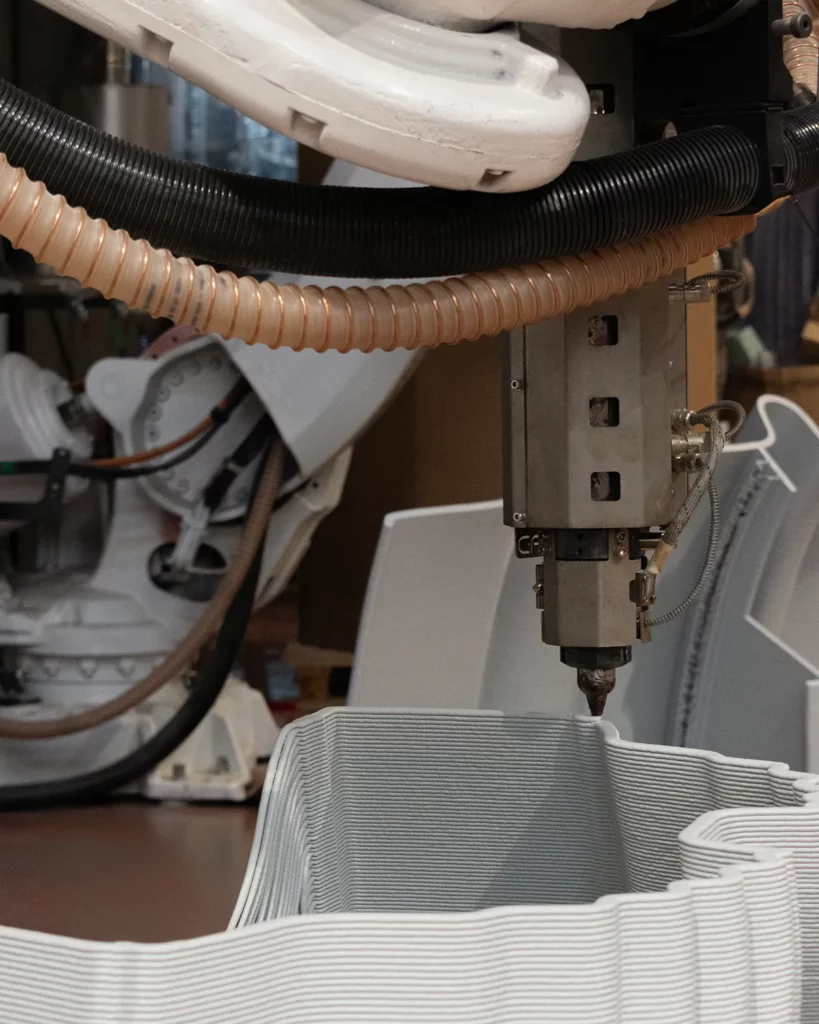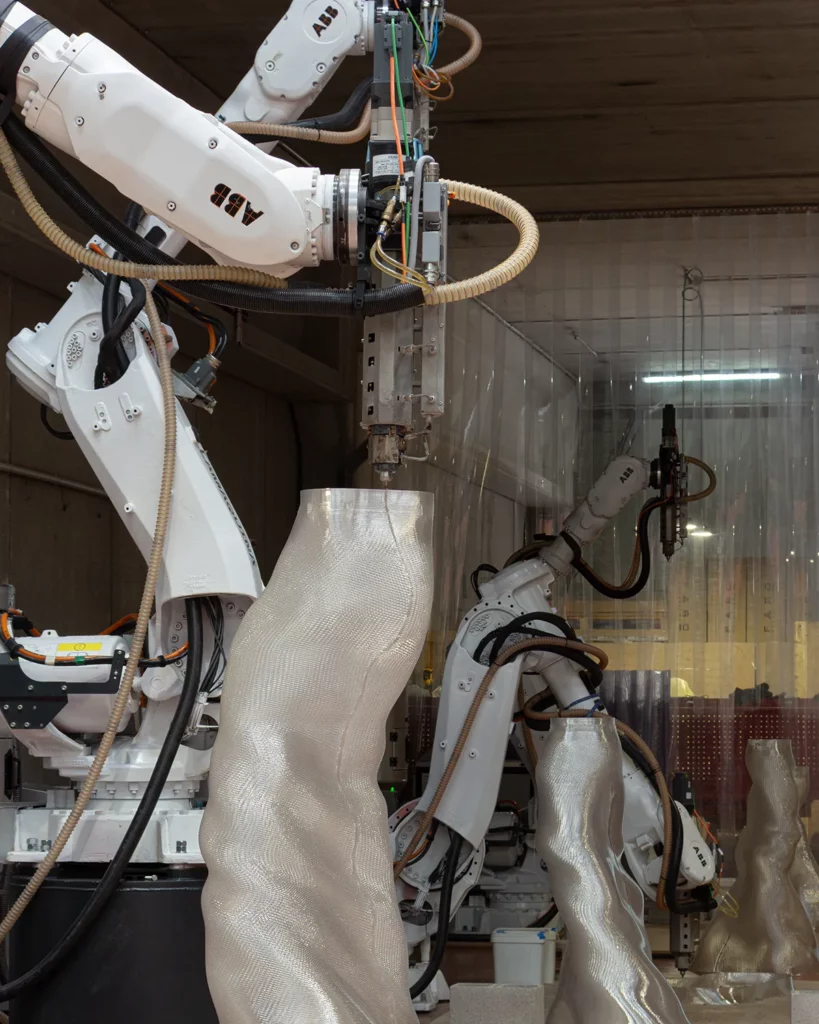Layer by Layer: The Future of Architectural Design Reimagined
Manufacturing large-scale elements sustainably and with high precision is now technically possible.

The construction industry is responsible for 37% of global emissions. In response to this staggering number, LAMÁQUINA is committed to manufacturing architectural elements sustainably layer by layer through innovative techniques that use circular materials.
At the heart of this transformation lies computational design, a discipline that mediates between abstract forms and real-world fabrication. Through coding, engineers now translate geometric forms into computational scripts that instruct robotic arms to craft tangible objects. These robotics arms, acting as extensions of the designers’ minds, deposit material with high precision and enable the generation of complex forms. Thanks to varied points of rotation, these robots can operate across several axes to work on the most daring angles.
PROCESS CONTROL
Although 3D printing may appear to be a widely used technique by anyone willing to materialise an object, when it comes to architecture, any component involves a set of challenges that need to be carefully addressed. Unlike small-scale prototypes or decorative items, architectural elements must meet demands in terms of weight, structural resistance and long-term durability. As such, the entire process must be engineered to ensure that each piece complies with certification standards and performance requirements without straying from the original idea.
A key component in this workflow is the robotic extruder that controls how the materials are deposited. CEAD’s pellet extruders are at the forefront of this innovation, featuring between four to five independently controlled heating zones that ensure a uniform and progressive melting of the material. This prevents overheating and degradation of the material, common causes of inconsistent extrusion which can lead to flaws in prints.
For architectural applications, this level of thermal management is crucial to not only safeguard performance but also the aesthetic finish that defines the final work. Each layer is laid down with controlled timing for optimal adhesion and consistency throughout the entire build. Beyond this, CEAD extruders also offer independent material extrusion and robot movement, enabling features such as variable wall widths during a print to create aesthetic patterns, giving engineers and designers the freedom often desired in computational design. The high level of process control allows for the manufacturing process to be fine-tuned and even adjusted mid-print if needed.

IDEATION AND PRODUCTION AS ONE
Therefore, printing becomes part of the design decision-making. As ideation and production merge into a single fluid operation, designers gain full agency to refine their strategies from beginning to end. LAMÁQUINA pushes this even further by creating toolpaths beyond industry-conforming slicers, which requires a robust extrusion process. This, in turn, demands hardware capable of maintaining consistent performance to guarantee the desired quality and outcome, every time.
By eliminating long production chains and giving designers direct access to manufacturing, this approach to design not only streamlines workflows but also drastically reduces the carbon footprint of construction. Moreover, this technology enables the use of recycled materials, such as polymers in architecture.
Polymers, unlike the process of 3D printing itself, are long-chain molecules made up of repeating units. Found in both natural substances like cellulose and synthetic materials like plastics, polymers are particularly valued for their versatility, strength and lightweight properties. In the context of additive manufacturing, thermoplastic polymers especially offer a unique advantage, since they can be recycled in practice and at scale: at the end of the 3D-printed objects lifecycle, the material can be shredded and turned into pellets for reuse, making them completely circular.
Another advantage of working with thermoplastic polymers in additive manufacturing, is the access to a wide variety of different materials and the ability to switch between them easily from one project to the next. They can be short-fiber reinforced with biobased, glass or carbon fibers and/or treated with additives to tailor the mechanical properties and material characteristics. Material use can be tailored to the application requirements, for instance, using UV-stabilized PET-G for outdoor use or a wood-fiber filled PLA for a more sustainable option and natural feel. This expands the design space even further.

With the increasing sophistication of computational design and robotic fabrication, collaboration between engineers and industry partners has become a driver for expanding the potential of architecture. New avenues for spatial storytelling are opening where form, function, and sustainability coalesce into a coherent architectural language for the future.
